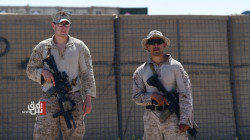Nation Observes Anniversary of Operation Desert Storm

Shafaq News / Operation Desert Storm began 31 years ago — on Jan. 16, 1991 — five months after Iraqi forces invaded and annexed Kuwait.
That operation to oust the Iraqis is also known as the Gulf War; it came about after Iraqi President Saddam Hussein refused to withdraw his forces from Kuwait.
In response, the United States and partner nations began a buildup of arms and forces in Saudi Arabia. That phase, leading up to Operation Desert Storm, was known as Operation Desert Shield.
Early on Jan. 16, 1991, the air campaign began with U.S. Army and Air Force helicopters knocking out Iraqi antiaircraft facilities and Hellfire missiles destroying Iraqi radar sites.
Then, fixed-wing aircraft from the Air Force, Navy, Marine Corps and coalition forces, augmented by cruise missiles, pounded Iraqi positions and supply lines for the next 42 days.
Iraqi forces were not idle. On Jan. 29, 1991, they attacked and occupied the city of Khafji, Saudi Arabia. Two days later, they were driven out of Saudi Arabia by U.S. Marines, Saudi and Qatari forces.
On Feb. 24, 1991, the ground war began with U.S. and allied forces penetrating deep into Kuwait and Iraq before the end of the day. The advance was so swift that masses of Iraqi troops began surrendering within hours.
By Feb. 28, 1991, U.S. and allied ground forces in Iraq and Kuwait decisively defeated a battle-hardened army — the fourth largest in the world — and liberated Kuwait.
During air and ground operations, U.S. and allied forces destroyed over 3,000 tanks, 1,400 armored personnel carriers, 2,200 artillery pieces, and countless other vehicles. Ninety-six service members were killed in action; an estimated 30,000 Iraqi troops were killed.
The war illustrated the importance of the 35 allies and partners that comprised the coalition to liberate Kuwait, which included several Arab nations.
The war also included some notable firsts:
It was the first war in which TV news broadcasts were aired live from the frontlines.
It featured the largest tank battle in U.S. history.
The Patriot missile system was used in combat for the first time; it was used to intercept Iraqi Scud missiles.
It was the first time GPS and precision-guided munitions were used on a massive scale.
Source: the US State of Department official website
